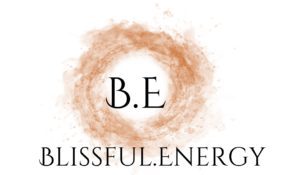
Is Thai Massage Dangerous?
Thai massage has long been revered for its list of benefits. However, a cloud of misconceptions often shrouds the safety of this ancient practice. In this assertive exploration, we will dissect common myths and unveil the truth about the safety of Thai massage. If you’ve ever wondered, “Is Thai massage dangerous?” – read on to gain a better understanding and make informed decisions about your well-being.
Debunking Misconceptions: Thai Massage Can Cause Injury Myth
One prevalent myth surrounding Thai massage is the fear of injury. Some individuals harbor concerns that the stretching and pressure applied during a session might lead to strains, sprains, or even more severe injuries. It’s time to set the record straight.
Truth: Skillful Practice of Thai Massage Mitigates Risk
Thai massage, when performed by a skilled and trained practitioner, is not inherently dangerous. In fact, the stretching and manipulation involved are designed to enhance flexibility, release tension, and improve overall well-being. The key lies in the practitioner’s expertise, attentiveness to the client’s body, and a clear communication channel throughout the session.
Myth: Thai Massage Is Not Suitable for Everyone
There’s a misconception that Thai massage is a one-size-fits-all practice, and it may not be suitable for everyone, particularly those with certain health conditions or physical limitations.
Truth: Customization Ensures Suitability
Contrary to the myth, Thai massage can be adapted to accommodate various health conditions and physical abilities. A skilled practitioner will conduct a thorough intake assessment, considering your health history and any existing concerns. This enables them to tailor the session, modifying techniques and intensity to ensure a safe and beneficial experience.
Understanding the Safety Measures in Thai Massage: Assessment and Communication
Before the commencement of a Thai massage session, a reputable practitioner conducts an intake assessment. This involves discussing your health history, pre-existing conditions, and specific wellness goals. This information guides the practitioner in customizing the session to address your individual needs and ensures that the chosen techniques align with your overall health.
Clear Communication During the Session
Safety in Thai massage is greatly enhanced through clear communication between the practitioner and the client. Throughout the session, you are encouraged to provide feedback on the pressure, comfort level, and any sensations you may be experiencing. A skilled practitioner values this communication, adjusting their techniques accordingly to ensure a safe and effective session.
Professional Training and Certification for Thai Massage
Importance of Proper Training
The safety of Thai massage is intrinsically linked to the training and expertise of the practitioner. Reputable Thai massage practitioners undergo rigorous training to master the art and science of this ancient practice. Training programs cover anatomy, physiology, traditional techniques, and safety protocols. Certification from recognized institutions is an indicator of a practitioner’s commitment to professionalism and client well-being.
Continued Education and Skill Refinement
The field of massage therapy, including Thai massage, is dynamic and evolves with ongoing research and advancements. A commitment to continued education is a hallmark of a responsible practitioner. Regular updates on best practices, new research findings, and advanced techniques contribute to the practitioner’s ability to ensure safety and efficacy in every session.
Hygiene and Sanitation: Clean and Safe Environments
Ensuring a clean and safe environment is a fundamental aspect of Thai massage safety. Reputable practitioners adhere to strict hygiene standards, including the use of clean linens, sanitized equipment, and a well-maintained massage space. These measures not only contribute to physical safety but also foster a sense of comfort and well-being for the client.
Potential Risks and Considerations : Understanding The Normal Sensations
Expected Discomfort vs. Pain
During a Thai massage session, it’s normal to experience sensations of stretching and pressure. However, it’s crucial to differentiate between expected discomfort and pain. Skilled practitioners guide clients to communicate any sensations that exceed their comfort level, allowing adjustments to be made promptly.
Contraindications and Health Considerations: Communicating Health Concerns for Thai Massage
Individuals with specific health conditions, such as cardiovascular issues, osteoporosis, or recent surgeries, may need to communicate these concerns to their practitioner. While Thai massage can often be adapted, certain modifications may be necessary to ensure safety. Open and transparent communication about your health is paramount.
Consultation with Healthcare Professionals
If you have significant health concerns or are uncertain about the suitability of Thai massage for your condition, consulting with your healthcare professional is advisable. This collaborative approach ensures that your holistic well-being is considered comprehensively, with input from both your primary healthcare provider and your Thai massage practitioner.
The Role of Personal Responsibility: Active Engagement in the Process
Clients play an active role in their safety during a Thai massage session. Educating oneself about the practice, asking questions, and actively engaging in the communication process contribute to a safer and more beneficial experience. Empowerment through knowledge ensures that clients make informed decisions aligned with their well-being.
Listening to Your Body: Mindful Awareness of Sensations
One of the key elements of safety in Thai massage is cultivating mindful awareness of your own body. Tuning in to sensations, breathing deeply, and being present during the session allow you to communicate effectively with the practitioner. If something feels uncomfortable or unfamiliar, vocalizing your experience ensures that adjustments can be made in real-time.
The Therapeutic Benefits of Thai Massage
Enhanced Flexibility and Joint Mobility
Thai massage is renowned for its positive impact on physical flexibility and joint mobility. The stretching and manipulation techniques target specific muscle groups, promoting increased range of motion. This can be particularly beneficial for individuals with sedentary lifestyles or those looking to improve their overall flexibility.
Improved Circulation and Blood Flow
The rhythmic pressure applied during Thai massage contributes to improved circulation and blood flow. This enhanced circulation facilitates the delivery of oxygen and nutrients to the body’s tissues, supporting overall cardiovascular health. The benefits extend beyond the massage session, contributing to long-term well-being.
Mental and Emotional Harmony
Stress Reduction and Relaxation
Thai massage incorporates mindfulness and intentional breathing, creating a therapeutic space for stress reduction and relaxation. The meditative aspects of the practice induce a state of calm, alleviating mental stress and promoting emotional well-being. The harmonious connection between body and mind sets Thai massage apart as a holistic wellness practice.
Mind-Body Integration
The integration of physical manipulation with mindfulness fosters a profound mind-body connection. This holistic approach recognizes the interconnectedness of physical and mental well-being. Thai massage serves not only as a means of physical rejuvenation but also as a pathway to mental clarity and emotional balance.
Energetic Alignment: Balancing Life Force Energy
At its core, Thai massage is a practice of energetic alignment. By working with the Sen lines and balancing the body’s energy, Thai massage aims to harmonize the flow of life force, known as Prana in Ayurveda. This holistic approach contributes to a sense of vitality, equilibrium, and overall well-being that extends beyond the massage session.
Cultural Significance and Modern Relevance
Thai massage is not merely a set of techniques; it is a cultural symbol deeply embedded in the fabric of Thai society. The respect for tradition, the emphasis on compassion, and the belief in the interconnectedness of mind and body all reflect the broader cultural values of Thailand. Understanding these cultural nuances adds depth to the practice of Thai massage.
Thai massage is intricately woven into the cultural ceremonies and rituals of Thailand. It is not just a therapeutic practice but a sacred art passed down through generations. The cultural symbolism extends to the very rituals surrounding Thai massage, from the traditional attire of the practitioners to the intentional setting of the massage space. Recognizing and respecting these cultural nuances enhances the authenticity and depth of the Thai massage experience.
Globalization and Adaptations
In the modern era, Thai massage has transcended its cultural boundaries and gained global popularity. However, this globalization has led to adaptations and variations in the practice. While traditional Thai massage remains revered, diverse interpretations and fusions with other therapeutic modalities have emerged. This intersection of tradition and innovation raises questions about authenticity and the preservation of the essence of Thai massage.
The globalization of Thai massage has both positive and challenging implications. On one hand, it allows individuals worldwide to benefit from this ancient healing art. On the other hand, the commercialization and dilution of the practice raise concerns about cultural appropriation and the loss of its traditional essence. Navigating this delicate balance requires a thoughtful approach that honors the roots of Thai massage while embracing its evolution in a global context.
Ethical Considerations
As Thai massage becomes more prevalent worldwide, ethical considerations come to the forefront. Issues such as cultural appropriation, respectful practice, and the importance of proper training and certification are crucial aspects to navigate. Respecting the cultural roots of Thai massage and ensuring responsible and informed practice are essential for both practitioners and recipients.
Ethical considerations extend beyond the individual practitioner to the broader industry. The standardization of training, certification, and ethical guidelines ensures that Thai massage maintains its integrity as a healing art. This requires collaboration between practitioners, educators, and governing bodies to establish and uphold ethical standards that preserve the authenticity and therapeutic efficacy of Thai massage.
Future Trajectories: Bridging Tradition and Innovation
As Thai massage gains recognition in the global wellness landscape, there is an increasing need for scientific validation and research. While the traditional knowledge passed down through generations holds immense value, empirical evidence can provide a bridge between ancient wisdom and modern understanding. Research initiatives exploring the physiological and psychological effects of Thai massage contribute not only to its credibility but also to its integration into mainstream healthcare practices.
Preservation of Traditional Wisdom
In globalization and innovation, it becomes imperative to preserve the authenticity of traditional Thai massage. Efforts to document and safeguard traditional techniques, rituals, and cultural nuances ensure that the essence of Thai massage remains intact. This involves collaboration between Thai massage practitioners, cultural custodians, and academic institutions to create a repository of knowledge that can be passed on to future generations.
Education and Training
As the demand for Thai massage grows, the importance of standardized education and training cannot be overstated. Ethical considerations, cultural sensitivity, and a deep understanding of both the physical and energetic aspects of the practice should be integral to training programs. This not only ensures the competence of practitioners but also fosters a global community that respects the roots and philosophy of Thai massage.
Thai Massage as a Safe and Transformative Practice
The safety of Thai massage is not a matter of chance but a result of meticulous practices, skilled practitioners, and informed clients. Dispelling myths and understanding the safety measures involved empowers individuals to explore the transformative benefits of Thai massage confidently. As with any therapeutic practice, approaching Thai massage with an open mind, clear communication, and a commitment to personal well-being ensures a safe and enriching holistic experience.
Embrace the Transformative Journey Safely
A Thai massage journey can be a transformative experience for your mind, body, and spirit. As you delve into this ancient practice, do so with the assurance that, when approached responsibly and with awareness, Thai massage is a safe and enriching avenue for holistic well-being. Explore the benefits, dispel the myths, and embrace the transformative potential of Thai massage with confidence and informed intention.
Written by Shifted SEO: SEO Company Melbourne, FL
